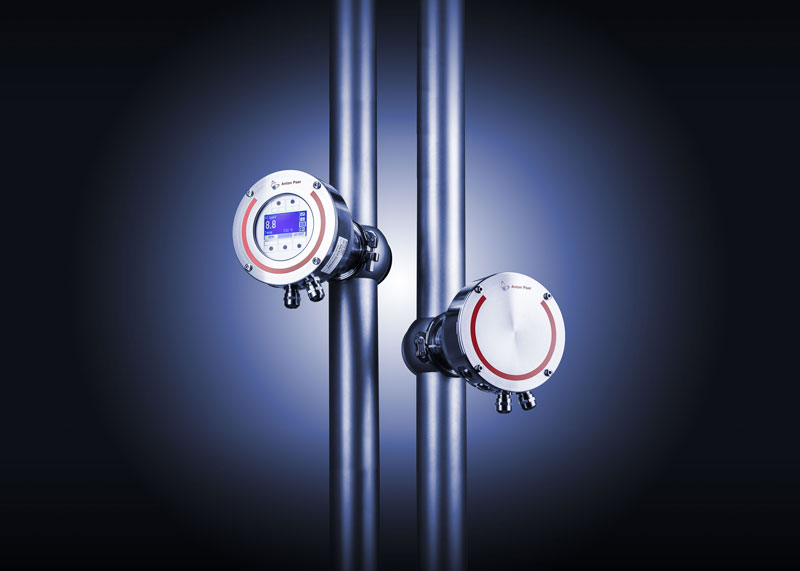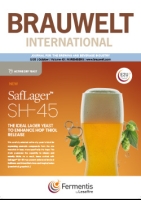The European Brewery Convention (EBC) is organising its international Congress for the 36th time with the goal of promoting exchange among its members and for discussing the current state of science and practice in the industry. Following Budapest in 2001 and Prague in 2005, the road to EBC once again leads to a Central European capital: from May 14th to 18th 2017, Ljubljana, the capital of Slovenia, will welcome European brewers. BRAUWELT International spoke with John Brauer, EBC Executive Officer, about the event.
The Oxy 510 inline sensor extends the Anton Paar portfolio for multiple-parameter inline analysis of beverages. Anton Paar’s Oxy 510 sensor unifies two different measuring ranges in one sensor. To measure either in the wide range or in the trace range requires only a quick exchange of the sensor cap.
When asking beer drinkers all the world over what they associate with a freshly dispensed glass of lager, 99 percent will answer: “freshness”. True, there is hardly anything better than a glass of fresh beer when sitting on a hot summer’s day in a shaded beer garden. But what does it actually mean: “fresh beer”? How is freshness defined, when is a beer not all that fresh anymore and which factors influence such staling?
This contribution, the second of two parts, addresses the extent to which consumers become aware of the taste of ethanol itself in beverages. In part 1 of this two-part contribution (BRAUWELT International, no. V, 2016, pp. 344-347), the necessary fundamentals of tasting were summarised and presented, based on a tasting result. In this part, the subject in question is investigated in tastings with white wine, red wine, sparkling wine, sparkling rosé wine and beer.
Bürkert Fluid Control Systems has expanded its product family of electromotive process valves to include diaphragm valves: the type 3323 shut-off valve and the Type 3363 control.
Handtmann Armaturenfabrik from Biberach/Riss, Germany, is a manufacturer of safety relieve valves for the food and beverage, pharmaceutical, and cosmetics industries. Production is carried out according to the Pressure Equipment Directive (PED), which, together with various applicable DIN standards, form the basic principles for the design and distribution of safety relieve valves on the European market. But what is the situation outside Europe? For the US market, other regulations and technical requirements apply. The certification of the safety relieve valves according to the relevant ASME code is a prerequisite for entering this market, and it also provides a good basis for other markets such as Canada or Asia.
This two-part contribution addresses the extent to which consumers become aware of the taste of ethanol itself in beverages. The taste test developed by Sommer was used as a method of measurement in a series of tastings. It has been described in a multi-part article in 2011 [1-5]. This part of the contribution briefly summarises and repeats the necessary fundamentals of tasting practice. Preliminary results are presented, these will be supplemented in the second part of the contribution.
Brewing microbiologically perfect beer is every brewery’s aspiration. Therefore, fast, safe and easy methods are needed for quality assurance, particularly for trace detection of beer spoiling bacteria. Enrichment in Döhler’s new, ready-to-use NBB®-PCR Broth in combination with a PCR system offers an ideal solution.
In Scandinavian countries, promotion and retailing of alcoholic beverages has traditionally been regulated by strict laws. In Finland, only alcoholic products with an alcohol content equal to or below 4.7 percent can be sold in supermarkets. An exact determination of alcohol is therefore required, and also of great importance for craft brewers. This generates a need for affordable, yet reliable and very accurate instrumentation.
Whether in politics, economics or society: sustainability is doing the rounds everywhere. Meantime, it has also got as far as agriculture. It has been found that agricultural products that serve an international market increasingly have to furnish evidence of a sustainable mode of production. The brewing sector, in Europe in particular Heineken, has committed itself to significantly raise sustainability of production. Many brewers are making great efforts to optimise sustainability in all areas.
Although beer is regarded as a microbiologically stable beverage, several species of microorganisms spoil beer. Among them, lactic acid bacteria (LAB) are predominant accounting for about 90% of microbiological incidents in the brewing industry. The following article describes recent progress in detection and identification methods for beer-spoilage LAB.



